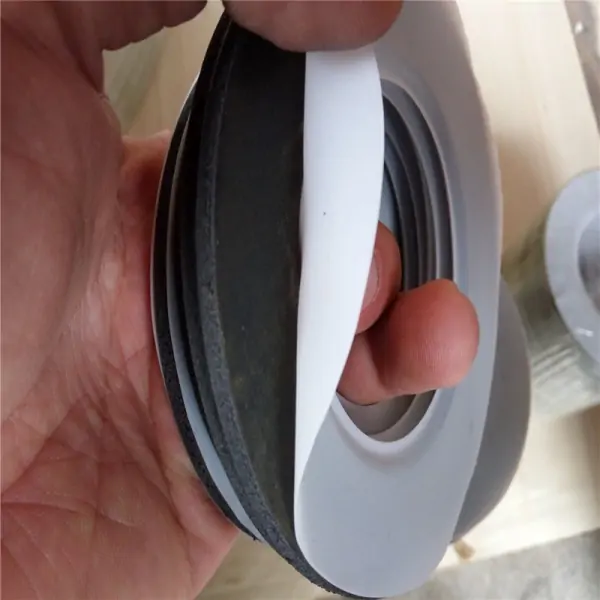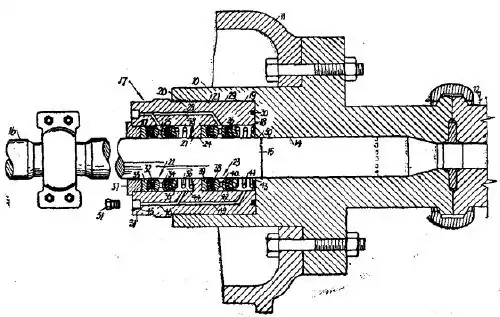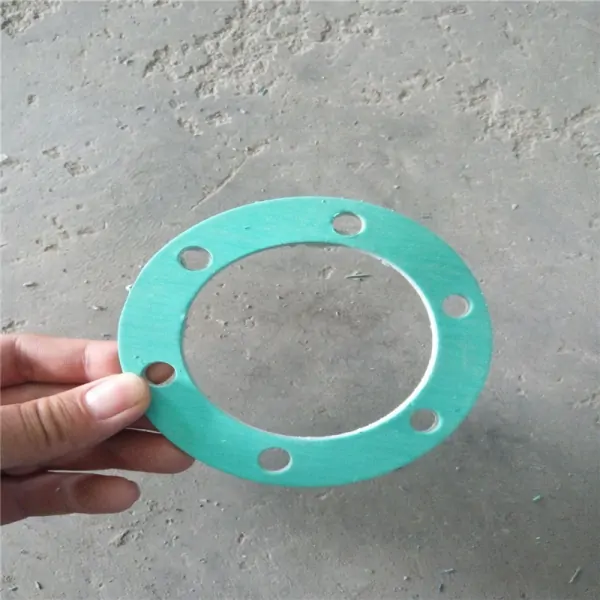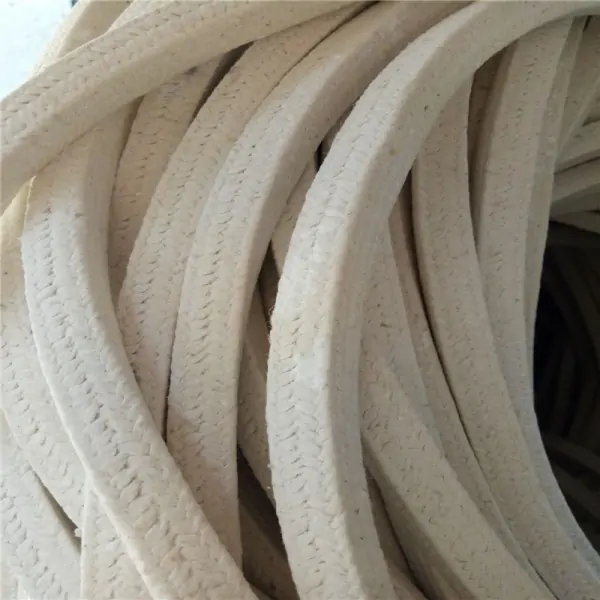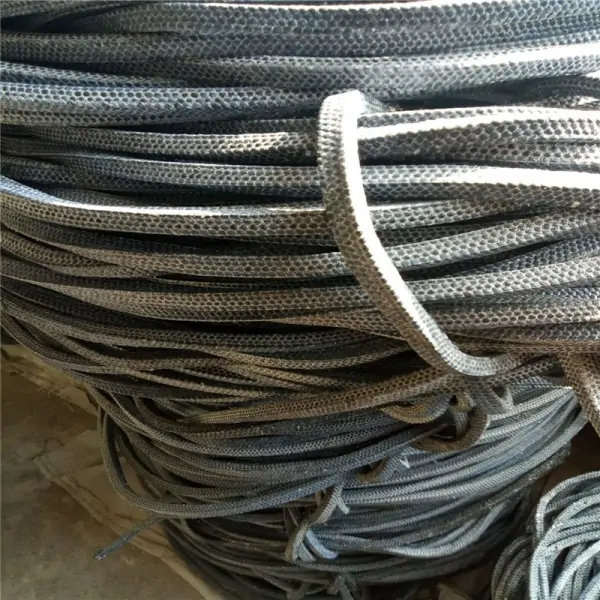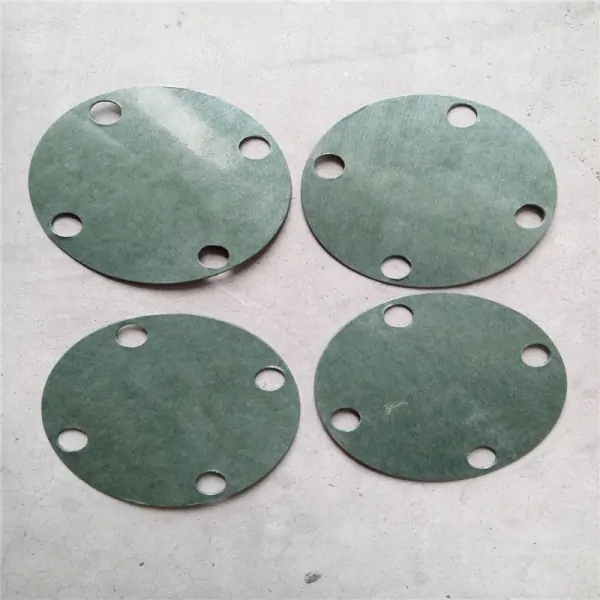The working principle of packing is that the surface of the shaft is very uneven under microscopic conditions, and can only partially adhere to the packing. So there is a small gap between the packing and the shaft, just like a maze. The medium is intercepted multiple times in the maze to achieve sealing effect.
The packing seal is installed inside the packing box by the packing, and the packing is pressed onto the surface of the shaft through the packing gland. Due to the rough surface of the shaft, it can only partially adhere to the packing, while some do not come into contact, forming countless mazes. When the pressurized medium passes through the surface of the shaft, it is throttled multiple times, achieving sealing through this "labyrinth effect". The fit and friction between the packing and the surface of the shaft are similar to sliding bearings, and there should be enough liquid for lubrication to ensure a certain service life of the seal, known as the "bearing effect". From this, it can be seen that a good packing seal is a combination of labyrinth effect and bearing effect.
The compression force of the packing on the shaft is generated by tightening the gland bolts. Due to the fact that the filler is an elastic-plastic body, when subjected to axial compression, friction is generated, causing the compression force to gradually decrease along the axial direction. At the same time, the radial compression force generated causes the filler to stick tightly to the surface of the shaft and prevent the leakage of the medium. The distribution of radial compression force decreases sharply from the outer end (gland) to the inner end, and then flattens out. The distribution of medium pressure gradually decreases from the inner end to the outer end. When the medium pressure at the outer end is zero, there is little leakage, and when it is greater than zero, there is leakage.
With the continuous emergence of new materials, the structural types of fillers have also undergone significant changes, which will undoubtedly promote the wider application of packing seals. Materials used as fillers should have the following characteristics: a certain degree of elastic-plastic properties. When the packing is compressed axially, it can generate a large radial compression force to obtain a seal; When there is vibration between the machine and the shaft, or when the shaft has jumping and eccentricity, it can have a certain compensation ability (tracking); Chemical stability. It is neither corroded or dissolved by the medium, nor pollutes the medium; Impermeability. The medium has some penetration into most fibers, so it is required that the filler structure be dense. Therefore, when making fillers, it is often necessary to impregnate and fill various lubricants and fillers; Good self-lubrication, low friction coefficient, and wear resistance; Temperature resistance. When friction generates heat, it can withstand a certain temperature; Easy disassembly; Simple manufacturing and low price. The packing, also known as sealing filler, is usually woven from softer linear materials and filled in the sealing chamber by a square shaped strip with a cross-sectional area, thereby achieving sealing.
Nowadays, packing is mainly made of graphite and various fibers. According to different requirements, materials such as carbon fiber, copper wire, 304, 316L, and Inconel alloy wire are used to strengthen. Aramid series
Gold aramid fiber packing, yellow aramid fiber packing, aramid fiber interweaved white tetrafluoroethylene packing, aramid fiber interweaved black tetrafluoroethylene packing This series of packing is made of aramid fiber as the main material, repeatedly impregnated with lubricants, tetrafluoroethylene lotion, etc. It has good high resilience, chemical resistance, low cold flow, and high linear speed. Compared with other types of packing, it can resist particle crystallization media and higher temperatures. It can be used alone or combined with other packing. Mainly used in medium with many particles and easy wear conditions.
Tetrafluoro series
White PTFE packing, black PTFE packing, white PTFE interwoven aramid fiber packing, black PTFE interwoven aramid fiber packing, PTFE pre oxidation wire packing, white PTFE impregnated silicone oil packing, and white PTFE impregnated rubber core packing. This series of packing is mainly made of polytetrafluoroethylene. It has excellent chemical stability, corrosion resistance, sealing performance, high lubrication, non viscosity and good anti-aging endurance. Capable of working for a long time at temperatures ranging from+250 ℃ to -180 ℃, resistant to all other chemicals except molten metal sodium and liquid fluorine, and remains unchanged when boiled in aqua regia. Mainly used in environments where pollution is not allowed, with high requirements for hygiene level, strong corrosiveness, high linear speed, and easy wear and tear.
Graphite series
Flexible graphite packing, metal reinforced graphite packing, carbon fiber reinforced graphite packing, and carbon fiber metal reinforced graphite packing. This series of packing features finely woven graphite as the main material. It has good self-lubrication and thermal conductivity, low friction coefficient, strong universality, good softness, high strength, and has protective effects on the shaft and rod. According to different requirements, materials such as carbon fiber, copper wire, 304, 316L, and Inconel alloy wire can be used for reinforcement. Mainly used under high temperature and pressure conditions.
Carbon fiber series
Carbon fiber reinforced graphite packing, carbon fiber metal reinforced graphite packing This series of packing mainly uses carbon fiber as the theme material. Carbon fiber is a new material with excellent mechanical properties. Carbon fiber has no creep, good fatigue resistance, small coefficient of thermal expansion, good corrosion resistance, and good thermal conductivity. Mainly used under high-temperature and high-pressure wear-resistant conditions.
Rubber core series
It is woven with super elastic silica gel core wrapped in high-quality synthetic fiber and repeatedly impregnated with tetrafluoro lotion, lubricant and barrier agent. It can effectively absorb mechanical vibration and control the leakage of gaps caused by vibration. It has excellent resilience, self-lubrication, flexibility, wear resistance, high tensile strength, and good chemical resistance.
High temperature and ultra-high temperature packing
The disc root is precisely woven from high-quality synthetic fibers, with a compact structure and excellent high-temperature and high-pressure resistance, low thermal conductivity, and non combustibility. Widely used in water, steam, acid, alkali and other media under extremely high temperature and high pressure harsh environments. Used for insulation and fire protection of pipelines, as well as static sealing of containers, heaters, manholes, furnace door heaters, high-temperature flanges, etc. High temperature promotion and use in steel mills, dedicated to blast furnace combustion valves.
In addition to the above materials, there are also acrylic packing, high water based packing, and jute packing to meet various working conditions.
